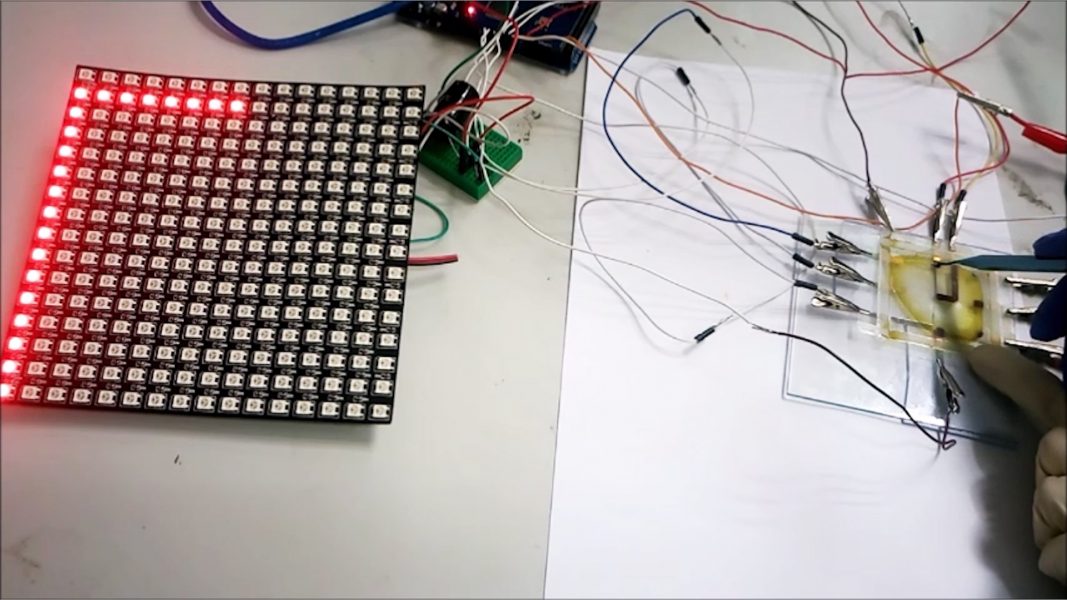Photosynthesis not only sustains plant life, but also fuels specialized sensory functions in plants like the touch-me-not. Self-powered, flexible electronics that mimic the tactile sensing ability of human skin could be made possible using photosynthesis as a model.
In an article in Advanced Materials, Professor Swee Ching Tan from the National University of Singapore and co-workers develop a bioelectronic sensor that can sense touch as well as low-intensity UV radiation.
The device is composed of a gold-coated polyethylene terephthalate (PET) film as the base electrode, a photosynthetic protein, and indium-tin-oxide-coated PET (ITO–PET) film as the top electrode.
Cells assembled in ambient light achieve touch-sensing functionality by modulating the base voltage difference. A touch response can be triggered under different conditions, including underwater and in the dark. 3-pixel cells demonstrate touch sensing in both planar and flexed conformation, and 9-pixel cells show multidirectional touch tracking.
The device can also sense low-intensity UV radiation, and can generate sufficient power that could potentially run a low-power electronic device.
To find out more about this bioelectronic sensor with a unique combination of functionalities, please visit the Advanced Materials homepage.

















